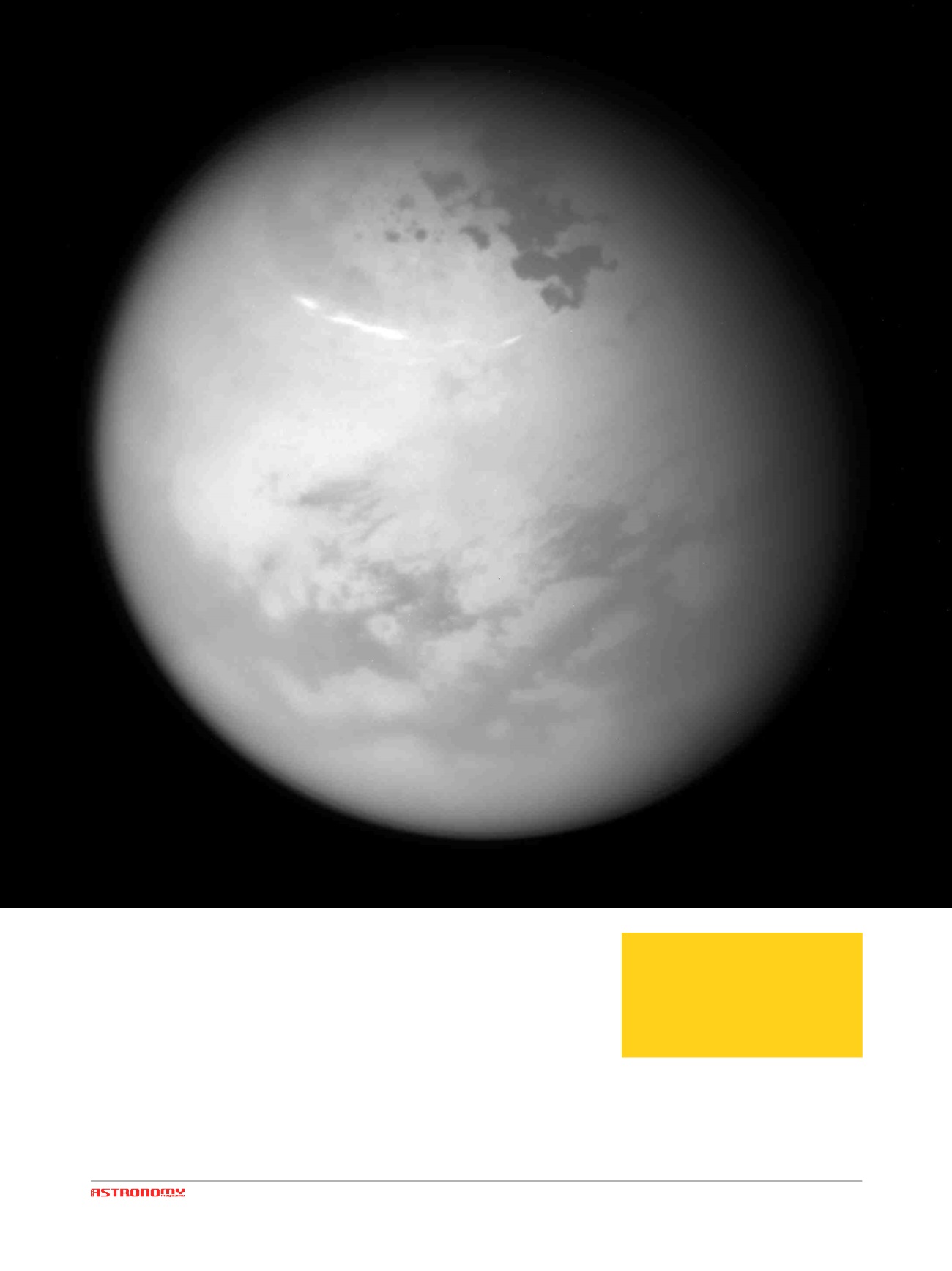

SEPTEMBER-OCTOBER 2017
that this chemical make-up is similar
to Earth’s primordial atmosphere.
The conditions on Titan, however,
are not conducive to the formation
of life as we know it; it’s simply too
cold. At ten times the distance from
the Earth to the Sun, Titan is so cold
that liquid methane rains onto its
solid icy surface, forming rivers, lakes,
and seas. These pools of hydrocar-
bons, however, create a unique envi-
ronment that may help molecules of
by ALMA Observatory
S
aturn’s largest moon, Titan, is
one of our solar system’s most
intriguing object and Earth-like
bodies. It is nearly as large as Mars
and has a hazy atmosphere made up
mostly of nitrogen with a smattering
of organic, carbon-based molecules,
including methane (CH
4
) and ethane
(C
2
H
6
). Planetary scientists theorize
ALMA confirms
complex chemistry in
Titan’s atmosphere
N
ASA’s Cassini spacecraft sees
bright methane clouds drifting in
the summer skies of Saturn’s moon
Titan, along with dark hydrocarbon
lakes and seas clustered around the
north pole. [NASA/JPL-Caltech/Space
Science Institute]
vinyl cyanide (C
2
H
3
CN) link together
to form membranes, features resem-
bling the lipid-based cell membranes
of living organisms on Earth.
















